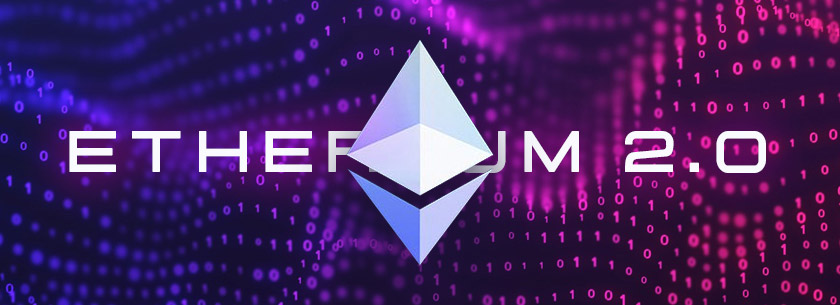The Ethereum project has achieved a lot in 5 years of its development. This is the placement of tens of thousands of decentralized applications in its infrastructure, and the total capitalization (with all associated tokens) of about 100 billion USD, and the total volume of transactions, which reached 1 trillion in 2020 alone. It was on its basis that the most stable and actively used stablecoins were created and it is he who is responsible for the explosive popularity of the new sector of decentralized finance.
However, this blockchain also has some drawbacks, the main one being the rather low network bandwidth. 14 Transactions per second is not enough for the number of users who daily use the network's services.
Nevertheless, the developers have long been planning a way to improve the blockchain - it was described in the project roadmap at the time of its publication. And the main moment for solving numerous problems will be the launch of the new Ethereum 2.0 network, which works through smart contracts and the Proof of Stake consensus algorithm. Even a clear date for the initial phase of this event is already planned - December 1, 2020.
Why is this necessary at all?
Then, to increase the network bandwidth, its protection, and the degree of decentralization, as well as to reduce the annual inflation to 1 percent. And yes, even though Ethereum 2.0 will be a completely new project running in parallel with the original ETH chain, users will be able to switch to it without any problems. True, unilaterally.
According to Vitalik Buterin, the creator of the project, the planned launch dates for the stages of a new project are too cautious, so in 2 years blockchain users will receive everything they were promised - a new PoS algorithm, a speed of 100 thousand transactions per second, a full-fledged connection between ETH1 and ETH2.
He also notes that already now, Ethereum users can take advantage of the ZK-Rollups technology, which increases the network throughput up to 4 thousand transactions and significantly reduces the amount of ether for their implementation. This "data compression" technology has already been tested with the USDT stablecoin from Tether. And according to the technical director of the company - Paolo Ardoino, this is a more reliable solution than using various sidechains.
4 main Ethereum 2.0 phases
Ethereum 2.0 innovations will be introduced gradually so that there is enough time to check their performance and look for possible errors and problems.
Zero phase. It will begin on December 1st with the creation of the new Beacon Chain. The main goal is to test the performance of the PoS algorithm on a real scale. The work of stakers, the mechanism for pseudo-random selection of a validator from them, the method of voting for block sizes, as well as the distribution of rewards and fines will be checked.
The first phase is sharding. Another idea aimed at improving network security. This implies the addition of 64 additional chains, which will have two-way communication with the main Beacon Chain.
One and a half phase. Merging the existing chain with a new one, working on a new consensus algorithm, while at the same time the existing mining mechanisms will be disabled.
Second phase. The launch of smart contracts and the start of the full-fledged work of the blockchain. Shards will become full-fledged "virtual machines" that provide a solution to this problem.
Features of the start of the launch of ETH2.0
As already mentioned, the creation of the first genesis block will take place on December 1, 2020, at 12.00 UTC or 2 pm Kyiv time. According to the pre-announced launch conditions, by this moment users had to make about 524 thousand ETH in the total deposit, as well as collect about 16 thousand validators. The result was exceeded. By November 30, they managed to collect more than 850 thousand ETH, and more than 26.5 thousand people confirmed the desire to become inspectors.
Possible difficulties
Network security expert Chase Wright doubts the success of launching the PoS consensus algorithm as part of the zero phase of Ethereum 2.0. He believes that the experience of Onyx, Witti, Altona, and Medalla test networks using this algorithm, as well as the lack of proper code auditing, can lead to numerous errors and loss of coins. He also notes the weak interaction between the various clients of the project and the lack of development efforts to fix this problem.
Conclusions
The start of the ETH2.0 project will be a turning point not only for this cryptocurrency but also for the blockchain industry as a whole. Especially if this initiative is a complete solution to the scaling problem. So we will follow the development of these events.
Published on the EXBASE based on materials from forklog.com





